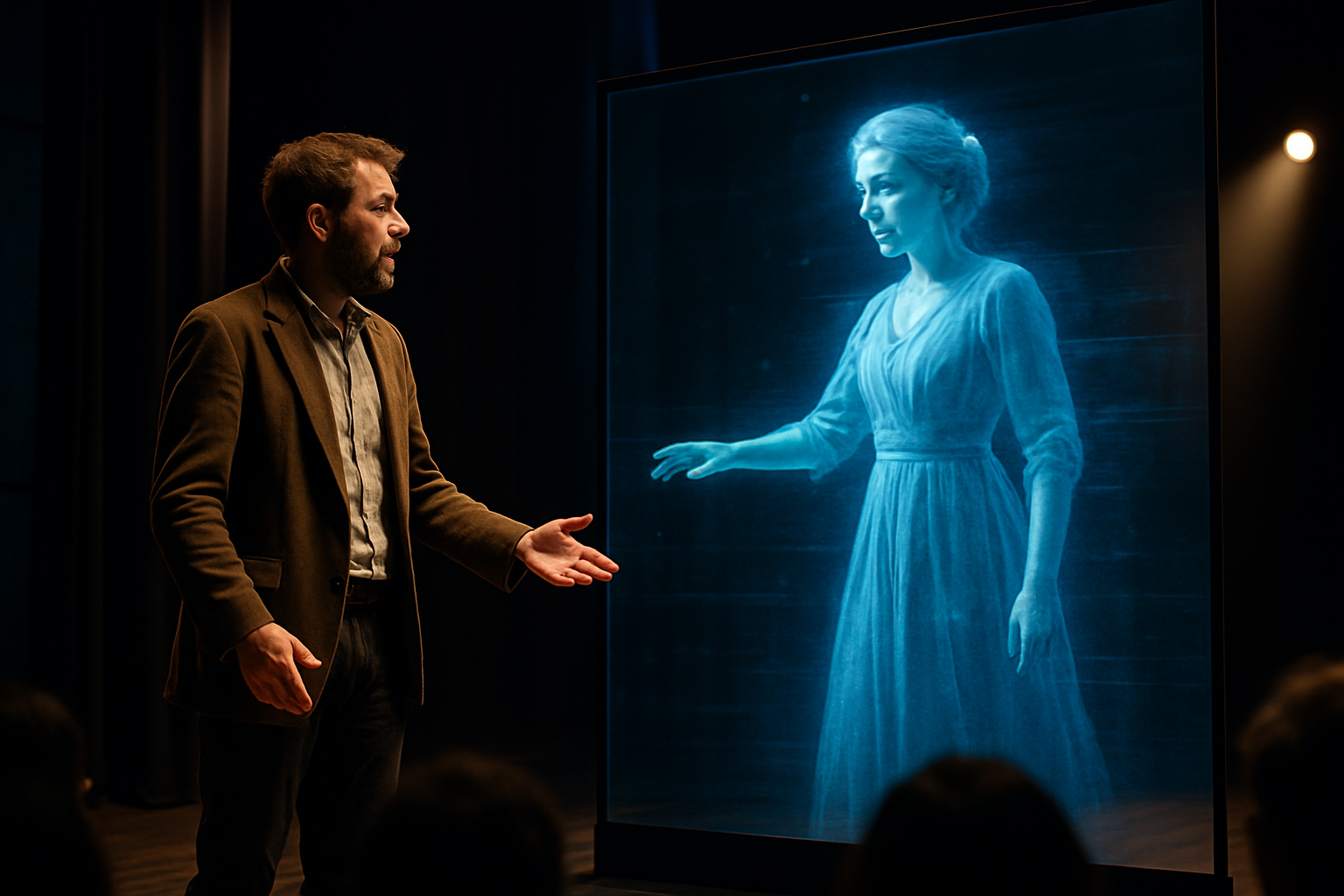Holographic Theater: Redefining Live Performance
In the ever-evolving landscape of performing arts, a groundbreaking fusion of technology and theater is captivating audiences worldwide. Holographic theater, once a concept confined to science fiction, has emerged as a revolutionary medium that challenges traditional notions of live performance. This innovative art form combines cutting-edge holographic projections with live actors, creating an immersive experience that blurs the lines between reality and illusion. As stages across the globe embrace this technology, holographic theater is not just reshaping the way stories are told, but also redefining the very essence of theatrical presence and audience engagement.

From Novelty to Artistic Medium
As the technology matured, visionary theater directors and production companies saw its potential for storytelling. The transition from novelty to legitimate artistic medium began with productions that integrated holographic elements into traditional plays. One of the first full-scale holographic theater productions, Hologauze’s adaptation of The Tempest in 2016, used holographic projections to create magical effects and ethereal characters, setting a new standard for visual spectacle in theater.
The Technical Marvels Behind the Magic
The core of holographic theater lies in its sophisticated projection systems. Modern productions utilize a combination of high-powered lasers, specialized screens, and advanced motion capture technology. The Pepper’s Ghost technique, a 19th-century illusion method, has been reimagined with digital precision, allowing for three-dimensional projections that can interact seamlessly with live performers. Companies like AV Concepts and Hologram USA have developed proprietary systems that can project ultra-high-definition images with startling clarity and depth.
Redefining Theatrical Presence
One of the most profound impacts of holographic theater is its ability to transcend physical limitations. Actors can now perform simultaneously in multiple locations, or even appear posthumously, opening up unprecedented possibilities for casting and performance. This has led to fascinating ethical and artistic discussions about the nature of presence in theater. Productions like the Royal Shakespeare Company’s The Tempest (2017) used motion-capture technology to create a live, reactive holographic Ariel, demonstrating how digital avatars can embody the essence of a character while pushing the boundaries of physical performance.
Global Collaborations and Cultural Exchange
Holographic theater has become a powerful tool for international collaboration and cultural exchange. Productions can now feature performers from across the globe, appearing together on stage in real-time. This has led to groundbreaking cross-cultural performances, such as the 2019 holographic adaptation of Strindberg’s Miss Julie, which featured actors from Sweden and Japan performing together, bridging language and cultural barriers through technology.
Challenges and Criticisms
Despite its innovative potential, holographic theater faces several challenges. Critics argue that the technology can overshadow the human element of performance, potentially reducing theater to mere spectacle. There are also concerns about the authenticity of holographic representations, especially when it comes to posthumous performances. Technical limitations, such as the need for controlled lighting conditions and specialized venues, have also hindered widespread adoption.
The Future of Holographic Theater
As technology continues to advance, the future of holographic theater looks increasingly promising. Researchers are working on developing more portable and affordable holographic systems, which could democratize access to this art form. There’s also growing interest in integrating artificial intelligence to create more responsive and interactive holographic characters. The potential for holographic theater in education, particularly in historical reenactments and scientific visualizations, is just beginning to be explored.
Conclusion: A New Dimension of Storytelling
Holographic theater represents a paradigm shift in live performance, offering a new dimension of storytelling that combines the immediacy of theater with the limitless possibilities of digital technology. As it continues to evolve, this art form has the potential to revolutionize not just how we experience theater, but how we conceive of performance itself. While challenges remain, the innovative spirit driving holographic theater forward ensures that the stage of the future will be a place where reality and imagination coexist in ways we’re only beginning to imagine.





